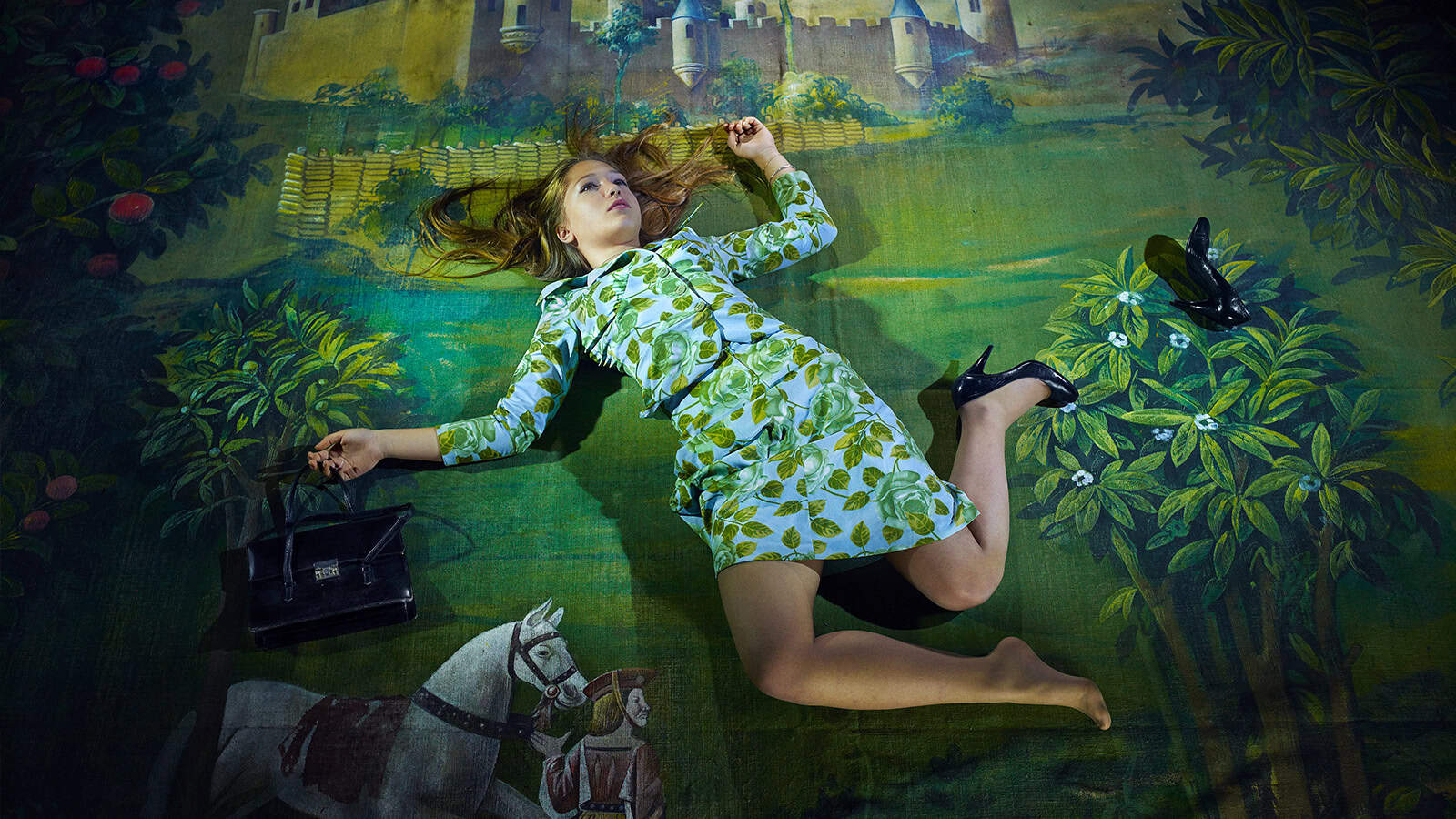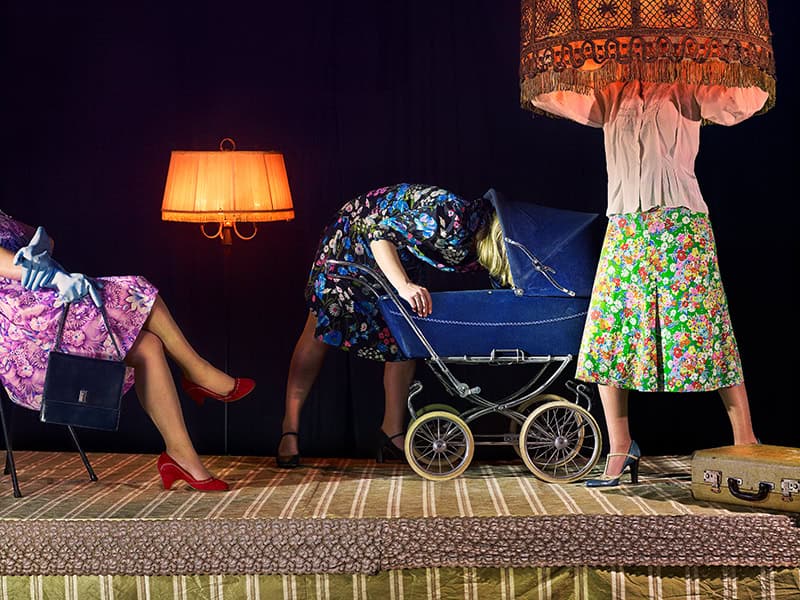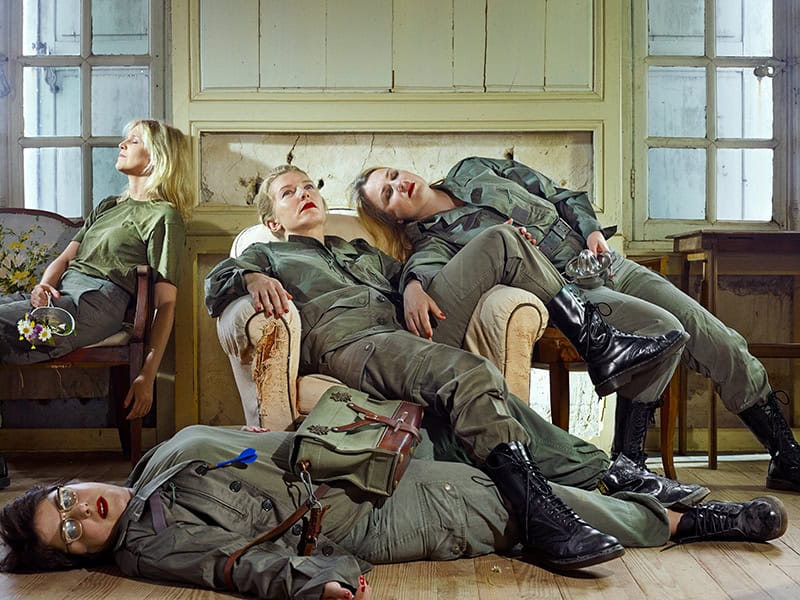
Become what you are
Shaking off centuries worth of rotten bias is a long and difficult process. Acknowledging the problem is the first crucial step
by Laura Silvia Battaglia
Photos by Guia Besana
“Become what you are.” This should be the mantra for the gender education needed in this century. Many educators, activists, sociologists, psychologists, and feminists have theorized this and are now realizing it. But this awareness is not yet common ground for most in a world where sexophobia, homophobia, denial of gender rights for non-binary people, and discrimination are rising fiercely and where all the achievements of identity minorities are blocked and denied through murder, rape, and all kinds of violence.
Judith Butler, an American post-structuralist philosopher and the mother of feminism and queer theories, was the first to challenge the implications of Hannah Arendt’s thought and its analysis of inciting violence against all forms of minority and diversity. After all, isn’t persecution based on assumptions of gender identity a fundamentalism of thought fueled by the banality of evil? Why are philosophical opinions and the resulting political action often based on the interests of specific social groups at the expense of others?
The prism of Hannah Arendt’s political thought, stretching across identity and politics—thanks to her personal experience as a Jewish refugee who fled the horrors of Nazism—paved the way for the concept of plurality. The next step was to transform the balance between identity and difference into solidarity. Here, the “Arendtian” approach meets Butler’s: a change of modus operandi in societies is needed but impossible if the philosophical concept on which our identity consciousness is based does not accept the dangers of actions taken to defend against “someone” or “something.”
Why are philosophical opinions and the resulting political action often based on the interests of specific social groups at the expense of others?
The surface of the problem is in the breaking news, symbolized in words-mantras and numbers. One for all is “femicide.” In Italy in 2021, 103 women were killed, one every three days. According to data from the “Homicide Report” by the Italian Police’s Criminal Analysis Service, 87 women were killed in their family setting: 60 of them died at the hands of their partners or ex-partners.
It doesn’t get any better for other gender identities, suppressed or persecuted: back in 2013, in its report on hate crimes in the European Union, Amnesty International denounced that 80% of homophobic or transphobic violence incidents were not logged by European polices either for fear of further victimization of the victims once the event was made official, or because the victims were afraid of being discovered by peers or relatives. In many European countries, the lack of protective legislation allows perpetrators to re-offend and does not aid in its resolution.
But such a vast social wound cannot be addressed unless we reach its deep root cause, which is philosophical and—only at that point—psychological. In between is biology, as an—almost—indisputable fact. And the folds of that “almost” hold the entire matter. Lorenzo Gasparrini, a philosopher and the author of enlightening essays, has now clearly grasped the essence of the issue. The titles of his books make it obvious: Why feminism also serves men, Becoming men.
Male relationships without oppression, Feminine singular, I am not sexist but, no, On rejection and it being an essentially male problem. Gasparrini, who is also the author of the blog Not this man, defines himself as an “anti-sexist activist” and has decided to break philosophy (he has a PhD in Aesthetics) out of the ivory tower of university lecture rooms and papers that are not easily accessible to the public: the first thing to do, according to him, is to take the bull of gender identity by its horns and thus go straight to the problem.

The condition of males hasn’t changed much over the past 30 years or so. That of women, on the other hand, has mutated considerably. We have inherited the responsibility of proving we are able to jump from caring for the home environment to creating a more expansive destiny for ourselves. When discussing this transition — of trying to find a way to balance everything when it seems like a constant battle—there’s always a feeling of struggle that bonds all women together, irrespective of their individual backgrounds. Under Pressure is the portrait of this intimate fragility.
One of the keys is complexity. “Let’s put it this way, and let’s face it,” says Gasparrini: “philosophically, identity is complex, and the societies we live in today are complex. What you are today, the self you build and identify with, is more complex than your innate and biological parts. And the differences have become more critical because the societies in which we live place more importance on differences.” It is not so easy to ask questions about what we are or think we are for ourselves and for others, or in the eyes of others, at least before and after puberty. “True. There are elements already taken for granted and questions we never ask ourselves. Still, in complex societies, differences raise new questions more often.”
Looking back at the history of African American societies, some large minority groups like women, black people, and doubly so, Black women, have taught us and are continuing to teach us what it means, philosophically, to raise questions about one’s own group and gender identity because of what they have had to deal with since birth and the majorities who have challenged their existence since the beginning. From them, we can learn how conflicts could be managed and how we could change them into experiences of coexistence in solidarity; these experiences, on the other hand, are unsuccessful if we live our existential and social identity as prevarication, as a toxic affirmation of ourselves against others.
What you are today, the self you build and identify with, is more complex than your innate and biological parts.
“For centuries, white and European males have never questioned their identity: we must have the courage to admit it.” Acknowledging it is the first step toward change, but further action is needed. Gasparrini points out that opening our eyes is not easy: there are many hurdles, and before we can understand our ties to society and the influences of the environment we grow up in as children, we have to dig into ourselves, our bodies, and our changing consciousness.
“There are very great forces that form our identity and gender consciousness: the value we give to our sex; the value we give to other quality parts of our bodies such as height, weight, smell, skin color: just think how being more or less hairy for males or females is powered with meanings in various and different societies and how at a certain point these aesthetics become non-negotiable values for which a hairy woman or a hairless man are ostracized in the name of this difference.” One of the main problems is how these characteristics are immediately assumed and assimilated as taken for granted by the subjects living in those societies precisely through the dominant social narrative, starting from the family circle.
It is not easy to disentangle it if you think about it. “In our complex societies, the models offered by media must also be added. There are many, but often they go in only one direction and show no alternative, particularly in creating the identification and dichotomy between male and female, already from the use of colors: pink only for females, blue only for males,” adds Gasparrini. No plurality, no complexity. “In summary, these dichotomies can be summed up in this equation: there is a ‘normal’ being, and there is a ‘non-normal’ being. And doesn’t often happen to discuss the issue in public debates in non-toxic ways.”

All these tensions create pathological paths, on an existential and social level”. Being afraid of not being ‘normal,’ therefore, becomes the existential norm, and it becomes so because no one has taught us to have the ability to face this fear and thus solve it. There is a lack of philosophical and educational tools. Without the tools, the prejudicial result is that not being ‘normal’ represents an existential failure. Hence, the violent and tragic consequences of these unresolved paths, often made by males to destroy other gender identities, that are filling the daily crime reports. The lack of education is crucial but still problematic trying to promote it even for an esteemed psychologist like Alberto Pellai, who is also the author of acclaimed books such as Cyber Generation, From Man to Father, and scientific articles such as “Is there a need for a gender education? The false myths of masculinity.”
Pellai, a professor in the Department of Biomedical Sciences of Milan’s State University, emphasizes the importance of puberty, where our identity establishes itself. “Our identity, not only our gender identity, defines as a general construct during puberty when we leave the model of obedience. From this time on, you become or should become the person you want or wish to be.” It is not so easy because identity is also defined as gender identity and is formed on four dimensions. Pellai explains: “First we have our biological sex; then our gender identity in the strict sense: it means how we experience our belonging to the biological gender, how we feel inside our sexual body; third we have the gender role, the expectations about how we carry around our being male or female; lastly, we have the sexual orientation which may, in the end, also not match our with biological sex.”
“Being afraid of not being ‘normal,’ therefore, becomes the existential norm, and it becomes so because no one has taught us to have the ability to face this fear and thus solve it”.
The foundations of puberty always reside in childhood. “This is the period of life in which we are, and we become what we live—warns the psychologist. Here gender stereotypes become expectations, and children find things already chosen for them by adults. Therefore, the role of adults is crucial: the way in which the adults of the parental couple live their male and female identity defines and drives the entire formation of the child’s identity.” The surrounding social fabric is also significant, according to Pellai. “If it is packaged or predefined, it reinforces gender socialization by polarizing it. Think, for example, of the types of sports that are predefined as being ‘for males’ and/or ‘for females.”
And then, there are more subtle aspects, which are the cultural sub-codes of gender and often concern the world of emotions and psychic functioning. “Fear and sadness, therefore all emotions that express weakness, are traditionally banned from the construction of male identity: this is a huge issue,” admits Pellai. Lastly, there is the whole issue of becoming adolescents that generates expectations that must be fulfilled: “Males are taught that pornography can provide a way to integrate gender with codes predefined by adults; something similar happens to females, who are taught the attribution of aesthetic value through the display of their bodies.”
All this takes on an exponential significance when amplified by marketing: “Sexuality is a powerful trigger of intimacy: it turns on the pure channel of arousal and gradually rises to the highest level of intimacy, which is the effective and loving project of every personal existence. When sexuality is forced by marketing, only the channel of arousal is enhanced. Already here, we have a form of education, aimed especially at teenagers, which denies any complexity in the construction of one’s complete existential identity,” says Pellai. Therefore, we need a new emotional education.
For Pellai, socially practicing and encouraging emotional education and not being afraid to do so “would help recognize the activation of emotions, help validate them and not attribute them to a specific gender. For example, sadness—and the tears that express it—would not be attributed to a behavior that is allowed (because conventionally considered ‘normal’) for females and, conversely, ostracized for males because it is not ‘normal,’ thus not compliant with its gender.”
Space must be extended to women, not conquered by women to the detriment of men.
Fundamentally, an emotional education would help us access our inner lives and understand the complexity and subtlety of the existential state of human beings, which is not “sexual,” that is, predetermined by our being biologically male or female. Besides being internal and personal, the benefits will surely reach communities and societies. Lorenzo Gasparrini is sure of it: “Philosophy can help, starting from the public debate, and can also suggest a change of pace in language: philosophy is not an obsolete paraphernalia but rather something that deals with people’s real problems. And the real problems here are the following: a male must stop thinking that the struggle of other gender identities undermines his identity because the goal is to attack or destroy it. He must stop living according to a rationale of violence and oppression.”
Concerning language, Gasparrini is very clear: “When it is said that women must have more space in society, the spatial metaphor must be translated this way: space must be extended to women, not conquered by women to the detriment of men.
In essence, we must not substitute women for men in power structures but rather complement, expand, and make these same structures more complex and diverse. The same goes for other gender identities.”
Going back to Hannah Arendt and Judith Butler, thinkers of plural identities, societies should be considered laboratories, always open to conflict resolution. If we had a clear understanding of the American model, we would have already had all the time necessary to implement and promote it.



